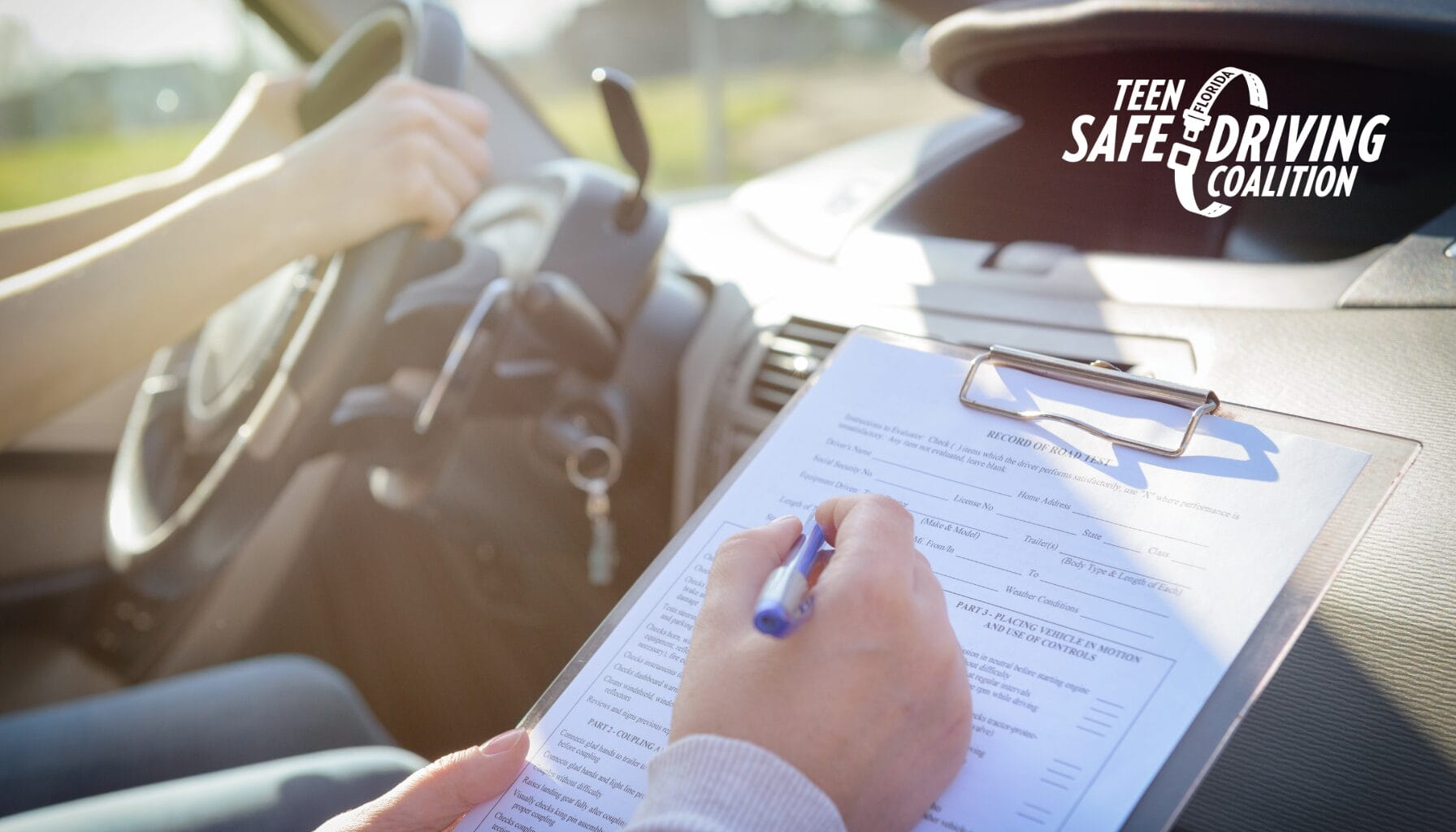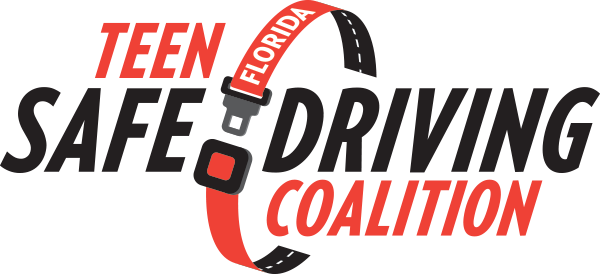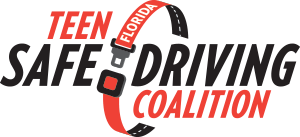
How to Pass Your Driving Test: A Guide for Florida Teens and Parents
Getting ready for your driving test can be a mix of excitement and nerves. It’s a big step toward gaining independence and joining the millions of drivers on Florida’s roads. But with the right preparation, you can tackle the test with confidence and ease. In this guide, we’ll walk you through everything you need to know to pass your driving test. From prepping your car to practicing key maneuvers, we’ve got you covered. Let’s make sure you’re ready to hit the road safely and responsibly!
Understanding the Driving Test
The driving test is your opportunity to show that you can operate a vehicle safely and follow traffic laws. It typically includes two parts:
- The Written Test: This part assesses your knowledge of traffic laws, road signs, and safe driving practices. Florida Highway Safety and Motor Vehicles offers a practice test that you can take to help prepare!
- The Road Test: This is where you’ll demonstrate your driving skills. The examiner will evaluate how well you control the vehicle, obey traffic laws, and respond to road conditions.
To get more details on both portions of the test, visit this site from FLHSMV. Passing the driving test is crucial for getting your driver’s license. It’s your chance to prove that you’re ready to drive on your own, so preparation is key!
Preparing Your Vehicle
Before your test day, make sure your car is in top shape. Here’s a checklist to help you get your vehicle ready:
- Check Your Documents: Ensure you have all the necessary paperwork, including your learner’s permit, vehicle registration, and proof of insurance. These documents are required for the test, and you could face penalties if you’re pulled over without them.
- Inspect Your Vehicle: Conduct a thorough check of your car’s condition. Make sure the tires are properly inflated, the engine is running smoothly, and the brakes are responsive. A well-maintained vehicle is less likely to cause issues during the test.
- Adjust Mirrors and Seat Position: Position your seat so you can comfortably reach the pedals and have a clear view of the road. Adjust your mirrors to minimize blind spots and ensure maximum visibility.
- Test Lights, Signals, and Brakes: Make sure all lights, including headlights, brake lights, and turn signals, are functioning. This ensures you can communicate with other drivers on the road.
Pre-Test Preparation
One of the best ways to boost your confidence before the test is to familiarize yourself with the test route. If possible, practice driving the route with a licensed driver. Pay attention to tricky intersections, road signs, and areas where specific maneuvers are commonly tested.
Practice Essential Maneuvers:
You’ll be tested on maneuvers like parallel parking, three-point turns, and lane changes. Practice these until you’re comfortable. Use quiet areas like empty parking lots to master these skills. Focus on smooth and precise execution, and always be aware of your surroundings.
Manage Pre-Test Nerves:
Feeling nervous is normal, but managing those nerves is important for performing well. Develop a routine to calm your mind before the test—try deep breathing, listening to calming music, or engaging in light exercise. Studies show that relaxation techniques can significantly reduce test anxiety.
On Test Day: Stay Calm and Focused
Here are some tips to ensure you’re in the best possible mindset on the day of your test:
- Get a Good Night’s Sleep: Aim for at least eight hours of sleep the night before your test. Being well-rested will help you stay alert and focused.
- Eat a Healthy Breakfast: Start your day with a meal that gives you sustained energy. Opt for foods high in complex carbs, lean proteins, and healthy fats.
- Arrive Early: Plan to get to the testing location early. This will give you time to settle in and mentally prepare without feeling rushed.
- Bring All Necessary Documents: Double-check that you have everything you need, including your learner’s permit, vehicle registration, and proof of insurance.
During the Test: Show What You’ve Learned
When you’re taking the road test, staying calm and following instructions is crucial. Here’s how to ace the driving portion:
- Listen Carefully: Follow the examiner’s instructions precisely. Clear communication shows that you can handle real-world driving situations effectively.
- Maintain Proper Posture: Keep your hands in the correct positions on the steering wheel and sit up straight. This enhances your control over the vehicle.
- Watch Traffic Signs and Signals: Always be on the lookout for signs and signals, and respond appropriately. This includes stopping at red lights, yielding to pedestrians, and obeying speed limits.
- Use Your Mirrors: Regularly check your mirrors to stay aware of your surroundings. This shows that you’re paying attention to other vehicles and potential hazards.
- Practice Defensive Driving: Anticipate and respond to potential hazards by maintaining a safe following distance and scanning for obstacles. Be ready to react quickly if needed.
- Stay Calm: If you start to feel anxious, take a deep breath and refocus. Trust in your preparation and concentrate on the road ahead.
Avoid Common Mistakes
To maximize your chances of passing, be mindful of common mistakes that can lead to failed tests:
- Rolling Stops: Always come to a complete stop at stop signs and red lights. Rolling through is a violation and can result in points being deducted.
- Not Checking Blind Spots: Always perform a shoulder check before changing lanes or turning. Failing to do so is a common mistake that can lead to crashes.
- Speeding or Driving Too Slowly: Stick to the posted speed limits and adjust your speed according to road conditions. Driving too fast or too slow can result in penalties.
- Failing to Yield: Always yield the right of way when required, especially at intersections and when merging into traffic.
- Improper Lane Changes: Signal before changing lanes, and always check your mirrors and blind spots. Make sure the lane change is safe and legal.
After the Test: What’s Next?
Once your test is complete, take a moment to reflect on your performance:
- Review Feedback: If you pass, congratulations! Celebrate your achievement and enjoy the freedom of having your driver’s license. If you didn’t pass, don’t be discouraged. Use the examiner’s feedback to improve your skills and schedule another test when you’re ready.
- Continue Practicing: Whether you passed or need to retake the test, continue practicing your driving skills. Consider enrolling in a driver’s education course for additional training and confidence building.
Resources for Florida Teens and Parents:
- Florida Highway Safety and Motor Vehicles (FLHSMV) Driver License Information: Provides all the information you need about getting a license in Florida, including testing locations and requirements.
- Florida Teen Safe Driving Coalition Resource Page: Focuses on promoting safe driving habits among Florida teens.
- SafeMotorist Driving Test Checklist: Download a checklist to ensure you’re fully prepared for your driving test.
Final Thoughts: Ready to Hit the Road?
Passing your driving test is an important milestone, but it’s just the beginning of your journey as a responsible driver. Keep practicing, stay informed about safe driving practices, and always prioritize safety on the road. Whether you’re a teen or a parent guiding your child through this process, remember that preparation and a positive attitude are the keys to success.
For more information on how to pass your driving test, you can visit the inspiration blog by SafeMotorist.com, which offers more guidance and resources.

